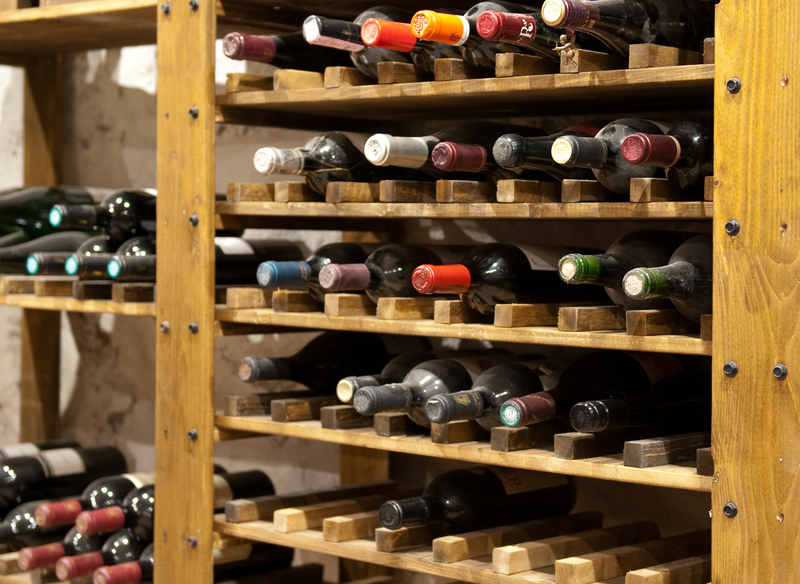Professional Advice on Moving Pianos: Avoid DIY Hazards
Posted on 22/05/2025
Professional Advice on Moving Pianos: Avoid DIY Hazards
Moving a piano is no simple feat. For many, the thought of relocating a treasured instrument can spark anxiety. Whether it's a classic grand, upright, or digital piano, the sheer size and delicate nature of these instruments can pose significant challenges. In this comprehensive guide, we'll share professional advice on moving pianos, highlighting why hiring experts is often the safest, most cost-effective choice, and how to avoid the many hazards associated with DIY piano moves.
Understanding the Complexity of Piano Moving
Pianos are intricate instruments consisting of thousands of parts, delicate keys, sensitive strings, and heavy cast iron frames. Their unique combination of fragility and weight makes moving a piano a specialized task. Here are key reasons why piano moving is far more complex than other household objects:
- Weight Distribution: Most pianos weigh between 300 and 1,200 pounds. The heavyweight is not evenly distributed, making them awkward and tricky to carry.
- Delicate Mechanisms: Keys, pedals, and internal strings can be easily damaged if the piano is bumped or handled incorrectly.
- Size and Shape: Pianos are often bulky and difficult to grip, which increases the risks when navigating stairs, doorways, or tight corners.
- Sentimental and Monetary Value: Damaging a family heirloom or a valuable instrument can be costly--not just financially but emotionally as well.
Common DIY Hazards When Moving Pianos
Attempting a DIY piano move can lead to a range of hazards, from physical injury to enduring damage to your prized musical instrument. Professionals urge homeowners to consider the following risks:
- Personal Injury: Back strains, crushed fingers, and serious falls are all too common during untrained piano moves.
- Damage to the Piano: Improper lifting, dragging, or tipping can detune or permanently break parts of the instrument.
- Home Damage: Unsuspecting DIY movers often scratch floors, ding walls, or break stairs.
- Lack of Specialized Equipment: Without industry tools like piano dollies, straps, and skid boards, moving safely is nearly impossible.

Why You Should Choose Professional Piano Movers
There's a world of difference between moving boxes and moving a piano. Here's why seeking expert piano moving services is your smartest bet:
Proper Equipment and Techniques
Professional movers come equipped with:
- Piano dollies and skids: Designed to distribute weight and maneuver pianos across various surfaces.
- Straps and Padding: To secure the piano and prevent movement or scratching during transport.
- Protective Wraps: Help shield the finish from bumps and the elements.
Expert movers also know precise lifting and moving techniques, which prevent damage and ensure safety during tight or complex moves.
Insured and Accountable Services
Reputable piano moving companies carry liability and cargo insurance, which means:
- Your property and the piano are financially protected against accidents or damage.
- You have peace of mind throughout the relocation process.
Efficient and Time-Saving
What could take a group of amateurs hours (and several headaches!) can be accomplished swiftly by professionals. Piano movers operate with a streamlined process, reducing the risk of delays or unexpected challenges.
Steps Involved in a Professional Piano Move
Wondering how experts approach the task? Let's break down a typical professional piano moving process:
- Assessment: The movers evaluate the type, size, and weight of the piano, as well as the route from the current to the new location.
- Prepping the Piano: They secure the lid, remove any detachable parts, and wrap the instrument carefully for transit.
- Using Proper Equipment: Movers utilize dollies, ramps, and harnesses designed specifically for pianos.
- Safe Navigation: With teamwork and communication, they skillfully move the piano through tight spaces, stairs, and outdoors.
- Loading and Transportation: The piano is safely loaded onto a truck with protective padding and bracing.
- Careful Unloading: At your destination, the piano is placed at your desired spot and unwrapped with the utmost care.
A DIY move rarely goes this smoothly. Even a minor slip can have costly results.
Special Considerations for Different Types of Pianos
Not all pianos are alike. Understanding the differences helps you see why professional advice for moving grand, upright, and digital pianos is crucial:
Moving a Grand Piano
Grand pianos are especially unwieldy due to their size, fragile legs, and the requirement to partially disassemble them. Movers must carefully:
- Detach the legs and pedals
- Wrap and protect each piece
- Use a piano board and straps for safe moving
One wrong move can severely damage a grand piano or cause severe injury.
Moving an Upright Piano
Upright pianos, while smaller than grands, are still extremely heavy. Improper shifting can crack the frame or warp the body, leading to costly repairs.
Transporting Digital Pianos
Digital pianos can still be delicate and contain sensitive electronics. Movers use anti-static wraps and take precautions to prevent jarring or drop damage.
Preparing for Your Piano Move: Essential Tips
If you've decided to hire professional help (excellent choice!), here's how you can contribute to a seamless process:
- Measure Doorways and Paths: Inform the movers of all potential obstacles, stairs, and tight spots.
- Clear the Route: Remove obstacles like rugs, furniture, or clutter from paths the movers will use.
- Secure Pets and Children: Keep them out of the moving area to prevent distractions and accidents.
- Communicate: Give the piano movers detailed information about your piano and any special concerns.
- Reserve Parking: Ensure there is a clear space for the moving truck as close as possible to your entrance.
Ask These Questions Before Hiring a Piano Moving Company
Don't settle for the first company you find online. Instead, quiz potential piano movers with these essential questions:
- Are you experienced in moving the type of piano I have?
- Do you carry insurance covering both property and instrument?
- What steps will you take to protect my piano and my home?
- Can you provide references from previous moves?
- Will you handle disassembly and reassembly if needed?
Cost of Professional Piano Moving: Is It Worth It?
One common concern about hiring specialists is the cost. Here's what you need to know:
- Pricing typically factors in: The size and weight of your piano, complexity (stairs, tight spots), distance moved, and special requirements.
- Average costs: For local moves, expect to pay between $150-$500. Long-distance relocations can run $500-$2000 or more, especially for grand pianos.
While the cost may initially seem high, consider the risks of a botched DIY attempt: medical expenses, costly repairs, or even the loss of a cherished heirloom. Professional moving services are almost always the safer and more economical choice in the long run.
Post-Move Piano Care and Tuning
After a major move, even the best professionals can't prevent all effects of relocation. Changes in environment and vibrations can impact tuning.
- Let the piano acclimate to its new setting for a few weeks before tuning.
- Engage a qualified piano technician to inspect and fine-tune the instrument post-move.
- Check for any visible damage or loose parts before using the piano.
Proper post-move care ensures your piano sounds its best and remains in excellent condition.

Frequently Asked Questions About Professional Piano Moving
- Is it ever safe to move a piano myself?
DIY moves are strongly discouraged unless the piano is very small and there are no obstacles. Even then, risks remain high. - Should I hire regular movers for my piano?
It's best to hire movers with specific expertise in pianos. General movers often lack the experience and tools required for safe piano handling. - How should I prepare my piano for the move?
Secure loose parts, close the lid, and communicate any concerns to your movers.
Conclusion: Trust the Experts--Avoid DIY Piano Moving Risks
The professional advice on moving pianos is clear: always rely on experienced specialists to ensure a safe, damage-free transition. DIY hazards when moving pianos--including injury, instrument damage, and property loss--are real and significant, often costing far more than the fee for expert help. Save yourself the stress and protect your beloved piano by entrusting it to those who understand the nuances of safe and effective relocation.
Choose professional piano movers for peace of mind and to enjoy beautiful music in your new location, without the drama and risk of a do-it-yourself disaster.
If you need piano moving services or more information, consult local piano moving experts or your nearest piano technician for personalized, professional advice.



